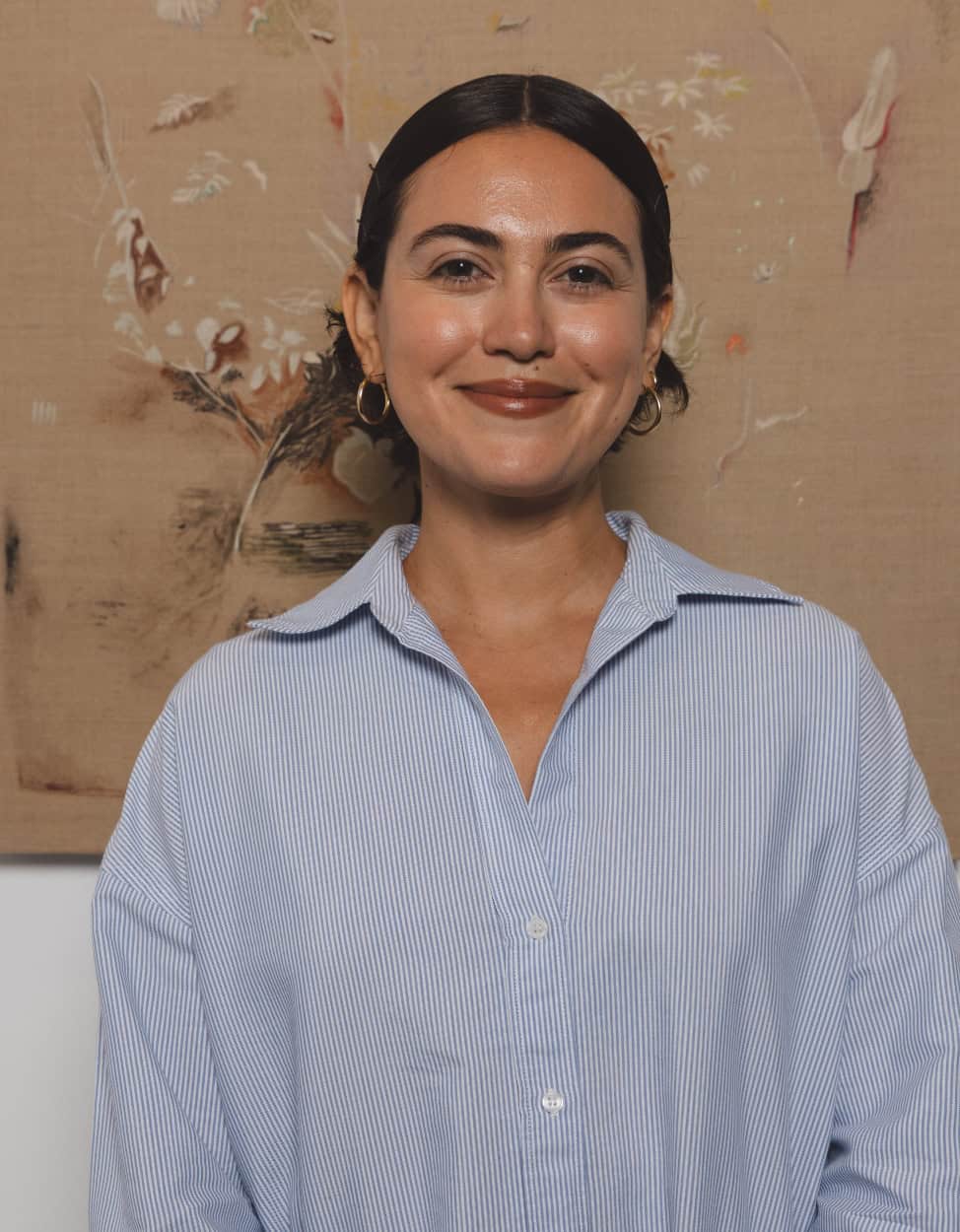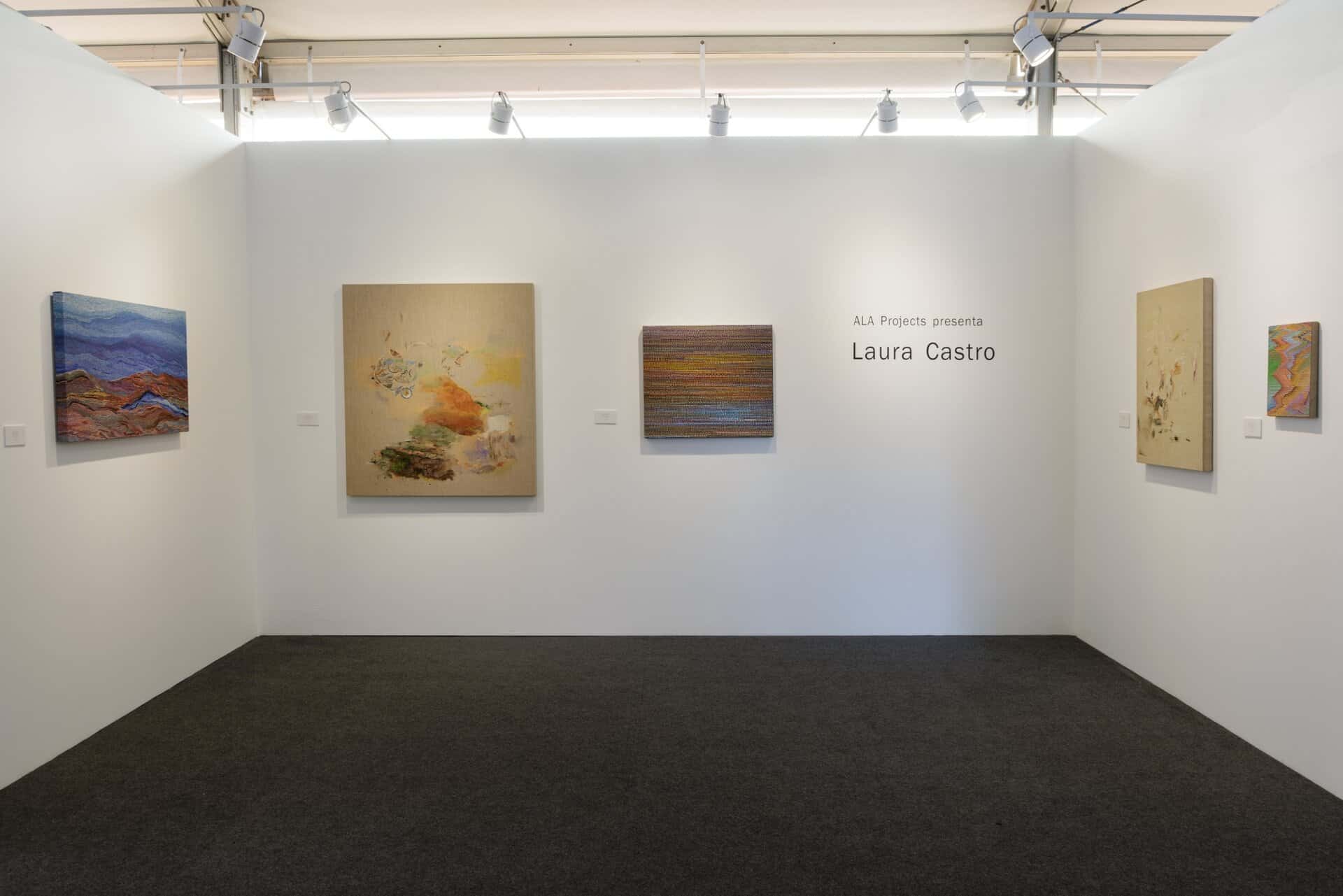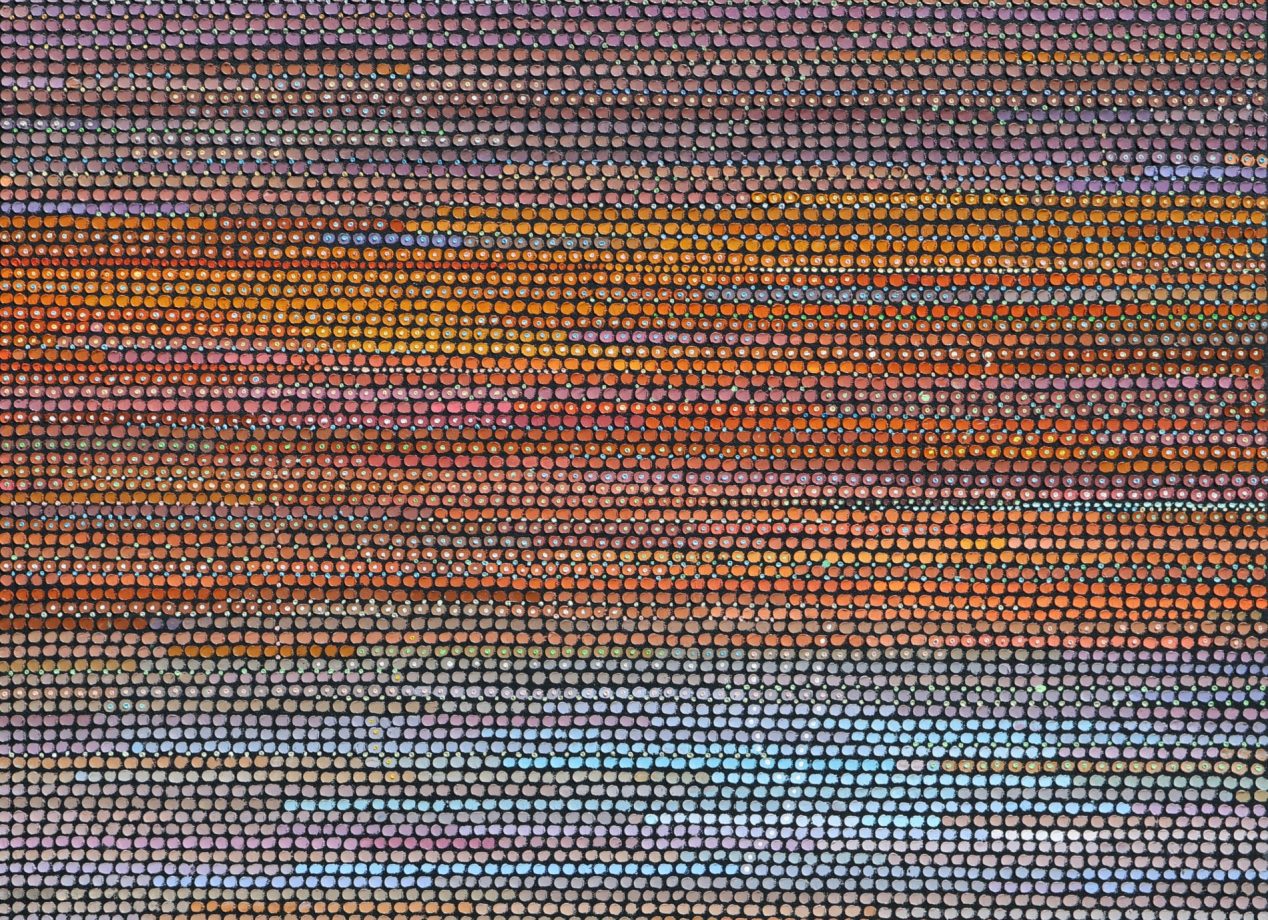MA Art Business alumna Amanda Garcia is the founder of Ala Projects, an initiative dedicated to championing emerging Latin American and diaspora art. Following a recent exhibition at Pinta Lima, Amanda offers a behind-the-scenes look at what it takes to prepare for an art fair.
 How does exhibiting at an art fair like Pinta Lima align with ALA Projects' broader mission of modernizing the art world and creating space for dialogue and connectivity?
How does exhibiting at an art fair like Pinta Lima align with ALA Projects' broader mission of modernizing the art world and creating space for dialogue and connectivity?
ALA Projects operates as a hybrid gallery. We don’t maintain a year-round brick-and-mortar space, instead, our programming unfolds through a combination of virtual exhibitions (via our website and Artsy) and physical pop-ups, primarily across the U.S. and increasingly in Latin America. Pinta Lima fits seamlessly into this approach, offering a pop-up experience—but with the added benefit of built-in infrastructure: venue, audience, logistics, and press.
We were likely the only hybrid gallery participating, which gave us a chance to share our model directly with new audiences and collectors. It allowed us to extend our digital-first approach into a physical setting and to present compelling new work by Dominican artist Laura Castro. We were proud to place several of her pieces into local collections—an especially meaningful outcome.
We see fairs as strategic activations that expand our decentralized presence. They offer concentrated visibility in new cities, deepen our regional ties, and further our goal of modernizing how contemporary art is accessed and experienced.
What goes into preparing for an art fair like Pinta Lima—from selecting the works to setting up the booth?
Once the artist and works are confirmed, a multi-layered process begins. This includes coordinating international shipping, designing the booth layout—often with digital renderings—selecting placement, and overseeing the physical installation.
Equally important is preparing all supporting materials: wall labels, a takeaway or catalog, curatorial texts, and background on the artist and their practice. We also learn every detail—dimensions, pricing, techniques—so we’re equipped to engage meaningfully with collectors, press, and the public. Every element is calibrated to reflect the artist’s voice and ALA’s ethos.
How do you decide which artists and artworks to present in this kind of setting?
For Pinta Lima, ALA was invited by Emiliano Valdés, who curated the emerging galleries section. He had recently encountered the work of one of our artists, Laura Castro, and felt it resonated with the section’s curatorial framework: Pensar el hacer, hacer el pensar (Thinking through making, making through thinking). After a few conversations, we submitted our proposal and were thrilled to be selected — one of six galleries in the section and 35 overall.
Since the invitation centered on Laura’s practice, we opted for a solo presentation. She developed five new works for the fair, including pieces from a new series she’s just beginning to explore. Fairs offer an ideal platform for introducing fresh work, and sharing a new direction from a mid-career artist with an existing following made for a rich, engaging booth.

Did you curate your exhibition for Pinta Lima with a specific audience or theme in mind?
The works Laura created for Pinta Lima are rooted in themes central to her practice—identity, memory, and resistance—but they also reflect new directions and experimental approaches. Her art challenges the nationalistic and patriarchal narratives often associated with Dominican identity and instead centers the lived experience of being a brown Dominican woman today.
She reclaims and reanimates forgotten histories—especially those that have been silenced or erased—through visual storytelling, making space for collective memory and healing. Presenting these themes to a South American audience—many of whom had limited exposure to Dominican history or Caribbean artists—felt both necessary and generative. The exchange was truly mutual: visitors were curious, thoughtful, and eager to engage, and I learned a great deal from their perspectives and their hunger for more Caribbean representation.
What does it mean to you to create a space that feels by and for the community within a commercial art fair environment?
It means making the experience approachable, inclusive, and rooted in exchange. We welcomed conversations not just with collectors, but also artists, students, and first-time fairgoers. We presented Laura’s work with care and context—inviting curiosity, reflection, and dialogue.
For us, a booth isn’t just a marketplace—it’s a temporary space for connection, education, and visibility. That openness is core to ALA’s ethos and something we aim to bring to every setting we enter.
Have you noticed any shifts in how collectors or viewers engage with emerging Latin American art?
Absolutely. Between 2020 and 2023, global sales of Latin American art rose by over 50% compared to pre-pandemic levels, surpassing $250 million. That growth is evident in the expanding presence of Latin American artists across fairs, auctions, and institutional exhibitions, although there is still much to be done in terms of equitable representation and infrastructure.
Fairs like Pinta Lima, are leaning into this momentum by dedicating more space to emerging art. This creates more direct engagement with local and regional voices and signals a broader shift toward collecting from within one’s own cultural context.
At the same time, we’ve noticed that younger collectors, in particular, are drawn to hybrid and itinerant spaces. They value flexibility, discovery, and context. More and more, collectors want to understand the artist’s story and process— they want to follow a trajectory, not just acquire a work.
This shift opens up exciting possibilities for projects like ours. We’re not just responding to market trends— we’re building relationships that foster long-term support for emerging Latin American voices.
What role do you think fairs like Pinta Lima play in shaping the future of the Latin American art scene?
Fairs like Pinta Lima are vital to the growth and visibility of the Latin American art ecosystem. They spotlight the richness of regional artistic production, foster cross-border conversations, and bring together a dynamic mix of artists, gallerists, curators, collectors, journalists, and cultural professionals.
They also offer space for discovery— of emerging voices, overlooked narratives, and experimental practices. Beyond their commercial function, these fairs act as annual meeting points that strengthen regional networks, promote cultural exchange, and keep the conversation going between fairs, cities, and communities. They build momentum. And they’re fun— spaces where art and community converge.
Where do you hope to see ALA Projects grow after this? Are there other fairs or formats you’re excited to explore?
Participating in Pinta has inspired us to pursue more fairs— ideally two to three annually, with a focus on Latin America. Fairs provide not only visibility, but also opportunities for face-to-face connection with artists we've often worked with remotely. Lima was a great example of that, and we’re excited to replicate it elsewhere.
Looking ahead, we’re also expanding our programming with new exhibitions— introducing at least five more artists by year’s end, for a total of 15 in our roster. We’re exploring collaborations with alternative venues, public programs, and workshops—all in service of making contemporary art more accessible and expansive. Whether online or in-person, our goal remains the same: to create vibrant, inclusive spaces where artists and audiences can connect meaningfully.
Photography by Lorenzo Urbina
